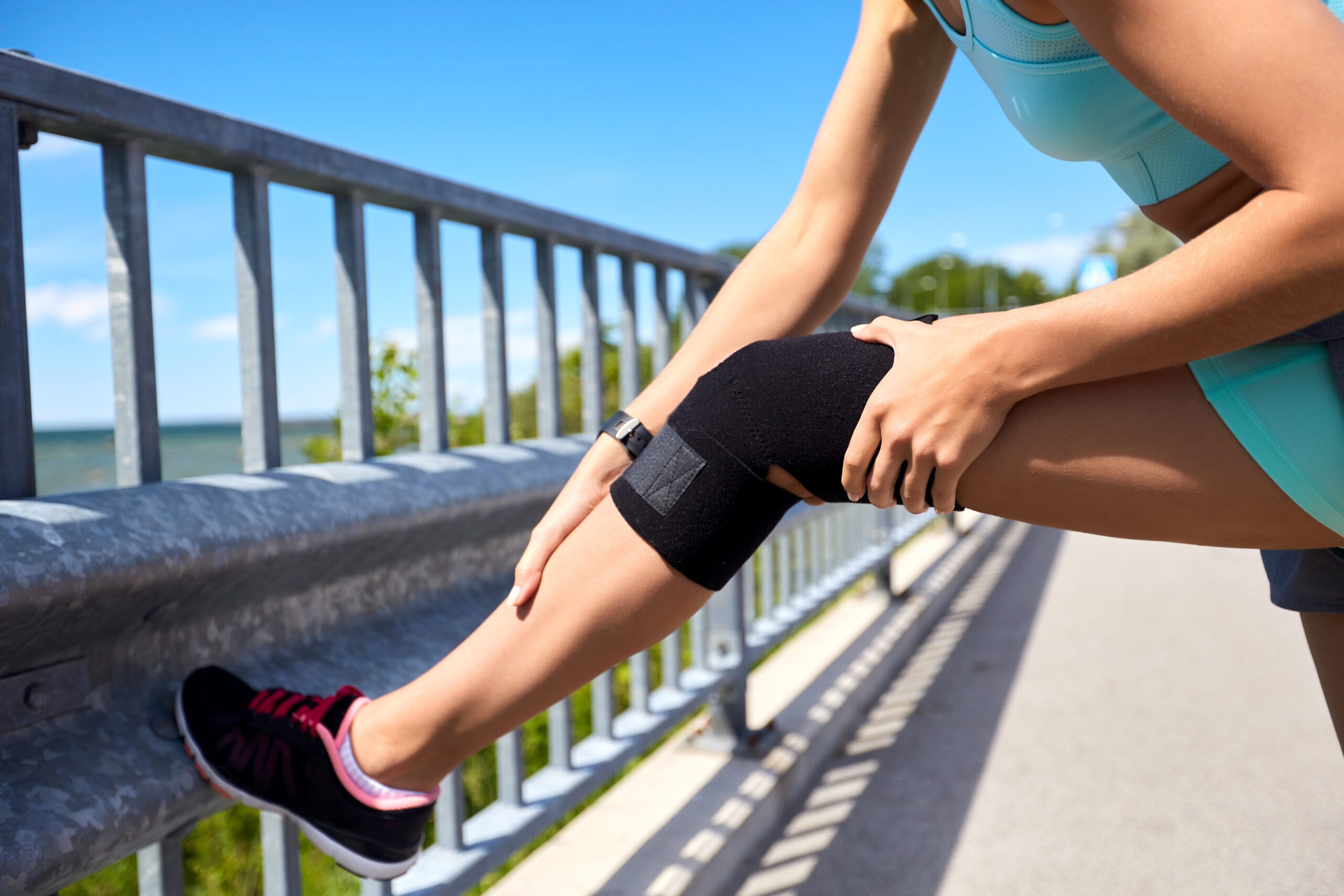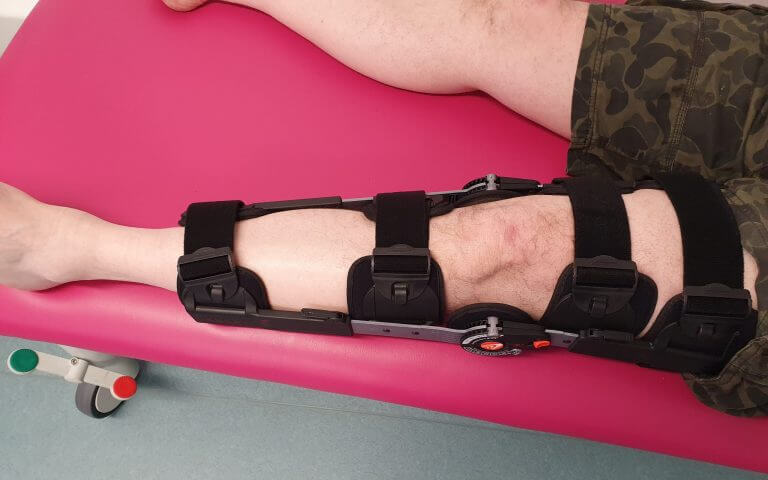Knee bursitis is a painful condition that affects the small, fluid-filled sacs, or bursae, located near the knee joint. When these bursae become inflamed, it can cause significant discomfort and limit one’s mobility. Many individuals with knee bursitis wonder if using a knee brace can help alleviate their symptoms and aid in their recovery. In this article, we will explore the potential benefits of using a knee brace for bursitis and discuss the types of knee braces that may be most effective.
Understanding Knee Bursitis:
Before delving into the role of knee braces in bursitis management, it’s important to understand knee bursitis itself. Knee bursitis typically occurs due to overuse, trauma, or excessive pressure on the bursae around the knee. The symptoms include pain, swelling, tenderness, and limited range of motion. These symptoms can make it challenging to perform everyday activities or engage in physical exercise.
Check out our Knee Pads for Comfort and Relief
The Role of Knee Braces

Knee braces are orthopedic devices designed to provide support and stability to the knee joint. While knee bursitis primarily affects the bursae surrounding the knee, a knee brace may help in various ways:
- Compression and Support: A knee brace can provide compression to the affected area, which may help reduce swelling and provide support to the inflamed bursae. This support can alleviate pain and discomfort.
- Alignment: Certain knee braces, such as those with hinged structures, can help align the knee joint correctly. This can be especially beneficial for individuals with bursitis, as it promotes proper movement and reduces stress on the affected area.
- Pain Relief: By stabilizing the knee and limiting its range of motion, a knee brace may help reduce pain associated with bursitis, allowing the affected area to heal more effectively.
Types of Knee Braces:
There are various types of knee braces available, each designed to address specific issues related to knee injuries, including bursitis. The most common types that may be helpful for knee bursitis include:
- Knee Sleeves: These are made of neoprene or similar materials and provide compression and warmth to the knee joint. They are lightweight and may help reduce swelling and alleviate pain.
- Knee Straps or Patellar Tendon Straps: These straps are designed to target specific areas of the knee, such as the patellar tendon. They can be useful in bursitis cases where the pain is localized.
- Hinged Knee Braces: These braces offer more substantial support and are recommended when stability is a significant concern. They help in keeping the knee aligned and reducing the stress on the inflamed bursae.
Cases Where Knee Braces May Be Helpful:
- Mild to Moderate Bursitis: For individuals with mild to moderate knee bursitis, a knee brace can be a valuable addition to their treatment plan. It can provide the necessary support and compression to help reduce pain and swelling while promoting healing.
- Post-Injury Recovery: After an injury or surgery related to knee bursitis, knee braces can be particularly helpful. They offer stability and protection to the knee joint during the healing process, reducing the risk of further damage.
- Physical Activity: Athletes or individuals who need to stay active despite knee bursitis may find knee braces beneficial. These braces can aid in maintaining mobility and stability during physical activities, helping to prevent exacerbation of the condition.
- Occupational Demands: If your job requires a lot of kneeling or repetitive movements that strain the knee joint, a knee brace may provide the support needed to continue working while managing bursitis symptoms.
Cases Where Knee Braces May Be Less Effective:
- Severe Bursitis: In cases of severe knee bursitis with significant inflammation and damage, a knee brace may have limited effectiveness. Surgery or more aggressive medical interventions might be necessary.
- Misaligned or Structural Issues: If the bursitis is due to underlying structural problems with the knee joint, such as misalignment, a knee brace may not address the root cause. It is crucial to address any structural issues alongside the use of a brace.
- Improper Fit or Usage: Ineffectiveness can also result from using an ill-fitting knee brace or not using it as directed. It is essential to consult a healthcare professional for guidance on the proper brace selection and usage.
Additional Considerations:
- Proper Sizing and Fit: When considering a knee brace for bursitis, it’s essential to ensure that you select the correct size and fit. Ill-fitting braces may not provide the desired benefits and could even exacerbate discomfort. Consult with a healthcare professional or an orthopedic specialist to get measurements and recommendations for the best fit.
- Consultation with a Healthcare Provider: While knee braces can offer relief for many with knee bursitis, it’s crucial to consult with a healthcare provider before self-prescribing one. Your healthcare provider can assess your specific condition, provide a diagnosis, and offer guidance on whether a brace is suitable for your situation.
- Physical Therapy: Combining the use of a knee brace with physical therapy can be highly effective. Physical therapists can help you perform exercises to strengthen the muscles around the knee and improve joint stability. They can also educate you on proper biomechanics to prevent future issues.
- Custom-Made Braces: In some cases, custom-made knee braces, prescribed by a healthcare professional, may be necessary. These braces are tailored to an individual’s unique anatomical needs and can provide optimal support and comfort for those with severe knee bursitis.
- Long-Term vs. Short-Term Use: Consider whether the knee brace is intended for short-term symptom relief or long-term support. Some individuals may only need a brace during acute flare-ups, while others may require ongoing support due to chronic or recurrent bursitis.
- Monitoring and Adjusting: It’s important to monitor your progress while using a knee brace. If your symptoms worsen or do not improve, consult with your healthcare provider for adjustments to your treatment plan, which may include modifications to the type or fit of the brace.
Conclusion:
The use of a knee brace for knee bursitis can be beneficial, especially when used in conjunction with other treatment methods such as rest, ice, anti-inflammatory medications, and physical therapy. While knee braces can provide support, pain relief, and reduce swelling, their effectiveness varies from person to person.
In conclusion, knee braces can help in managing knee bursitis symptoms, but their suitability depends on the individual’s specific condition and needs. Consulting with a healthcare professional, such as an orthopedic specialist, is essential to determine whether a knee brace is the right choice for your situation. Additionally, they can provide guidance on selecting the most suitable type of knee brace based on the severity and location of your knee bursitis. Ultimately, the use of a knee brace should be part of a comprehensive treatment plan to effectively manage knee bursitis.





